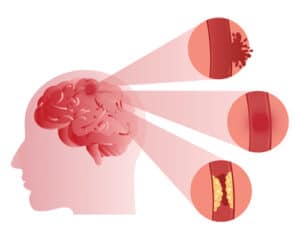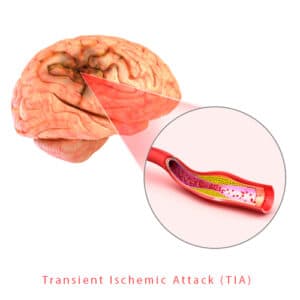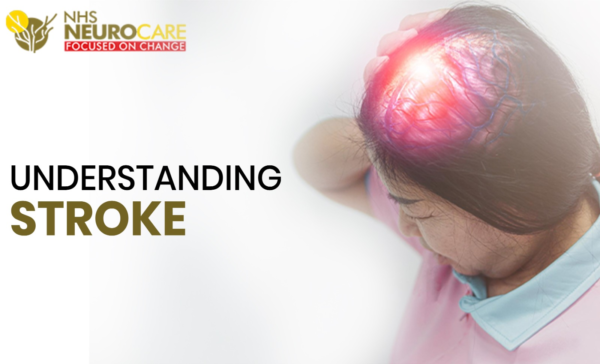Understanding Brain Stroke
A Brain stroke occurs when there is a disruption in the blood supply to the brain, which can cause brain damage. The two main types of strokes are ischemic stroke and haemorrhagic stroke. Ischemic stroke occurs when a blood clot blocks an artery in the brain, while haemorrhagic stroke happens when a blood vessel ruptures and bleeds into the brain. Another type of stroke is a transient ischemic attack (TIA), which is a temporary disruption of blood flow to the brain.

Causes and Symptoms of Stroke
Several factors can increase the risk of stroke, including high blood pressure, smoking, diabetes, obesity, and a family history of stroke. Symptoms of stroke can vary depending on the area of the brain affected but may include sudden weakness or numbness in the face, arm, or leg, trouble speaking or understanding speech, sudden vision changes, difficulty walking, loss of balance, severe headache, or confusion.
Treatment for Stroke
Immediate treatment for stroke is critical to minimize brain damage and improve outcomes. Treatment options will depend on the type of stroke and may include medications such as clot-busting drugs for ischemic stroke or surgery for haemorrhagic stroke. Other treatments for stroke may include rehabilitation, which can help individuals regain their strength, mobility, and independence.
Brain stroke treatment focuses on restoring blood flow to the brain and minimizing damage to brain tissue. Ischemic stroke treatment involves the use of medication to dissolve blood clots and improve blood flow to the brain. Brain damage treatment involves rehabilitation and therapy to help the patient recover and regain their abilities. This treatment may also involve medications to prevent blood clots, such as antiplatelet drugs or anticoagulants. Additionally, individuals who have had a stroke may need to manage underlying conditions such as high blood pressure, high cholesterol, and diabetes to reduce their risk of future strokes.
Brain Damage treatment resulting from stroke may include medications to reduce swelling or prevent seizures, as well as rehabilitation therapies such as physical therapy, occupational therapy, and speech therapy. These therapies can help individuals regain their strength, mobility, and ability to communicate.
For patients who have had a transient ischemic attack (TIA), also known as a mini-stroke, TIA treatment may involve medication and lifestyle changes to reduce the risk of a future stroke.

It is essential to seek treatment for Brain stroke as soon as possible to minimize damage to the brain and improve the chances of recovery. In Jalandhar, there are several brain stroke treatment centres, including mini-stroke treatment centres and TIA treatment centre. These centres provide specialized care and treatment for stroke patients, including medication, therapy, and rehabilitation.
Conclusion
If you or someone you know is experiencing symptoms of a stroke, it is crucial to seek immediate emergency care. In Jalandhar, one such unit that can manage such cases with extreme skill & expertise is NHS Neuro Care, A Unit of NHS Hospital. The team provides comprehensive care for all neurological issues in one place. The hospital has a modern 24/7 STROKE ICU with a dedicated staff of experienced professionals who can treat different types of stroke patients.
Additionally, the hospital’s advanced CT Angio and 1.5 T MRI facility are located near the triage area, ensuring that stroke patients can receive prompt diagnosis and treatment without delays. In fact, the hospital has a door to needle time of only 10 minutes for acute stroke cases.
NHS Neuro Care provides tertiary level care across a wide range of neurological conditions & diseases that may be induced by age or lifestyle, critical conditions, chronic ailments, sudden injuries, emergencies, etc.
Time is of the essence when it comes to stroke treatment, and delaying treatment can result in permanent brain damage or death. Remember, recognizing the signs of a stroke and seeking treatment promptly can save a life.
FAQ’s
Q: What is a stroke?
A: A stroke occurs when blood flow to the brain is disrupted, either by a blood clot or a ruptured blood vessel. This can cause brain cells to die, leading to brain damage or even death.
Q: What are the risk factors for Brain stroke?
A: Common risk factors for stroke include high blood pressure, smoking, obesity, diabetes, high cholesterol, and a family history of Brain stroke.
Q: What are the symptoms of stroke?
A: Symptoms of stroke can include sudden weakness or numbness on one side of the body, difficulty speaking or understanding speech, sudden vision problems, and severe headache.
Q: What should I do if I suspect someone is having a Brain stroke?
A: If you suspect someone is having a stroke, call 911 immediately. The faster a stroke is treated, the better the chances of recovery.
Q: What is the difference between a stroke and a transient ischemic attack (TIA)?
A: A TIA, also known as a “mini-stroke,” is caused by a temporary disruption of blood flow to the brain. The symptoms of a TIA are similar to those of a stroke, but they usually only last a few minutes to an hour and do not cause permanent damage.
Q: How is Brain stroke diagnosed?
A: Brain Stroke is typically diagnosed using a combination of physical exams, imaging tests (such as a CT scan or MRI), and blood tests.
Q: What are the treatment options for stroke?
A: Treatment options for stroke include medication, surgery, and rehabilitation. The specific treatment plan will depend on the type and severity of the stroke.
Q: What is the recovery process like after a Brain stroke?
A: The recovery process after a stroke can vary depending on the severity of the stroke and the individual’s overall health. Rehabilitation may include physical therapy, occupational therapy, and speech therapy.
Q: How can Brain stroke be prevented?
A: Stroke can be prevented by making lifestyle changes such as quitting smoking, maintaining a healthy weight, exercising regularly, and controlling high blood pressure, cholesterol, and diabetes.
Q: What lifestyle changes can I make to reduce my risk of stroke?
A: In addition to quitting smoking, maintaining a healthy weight, exercising regularly, and controlling high blood pressure, cholesterol, and diabetes, other lifestyle changes that can reduce your risk of stroke include eating a healthy diet, limiting alcohol consumption, and managing stress levels.

